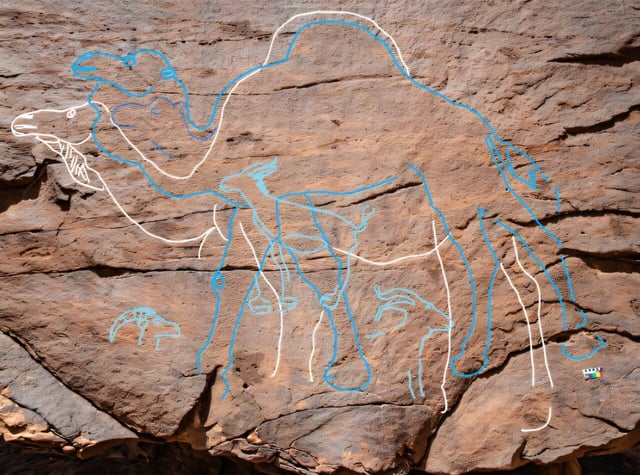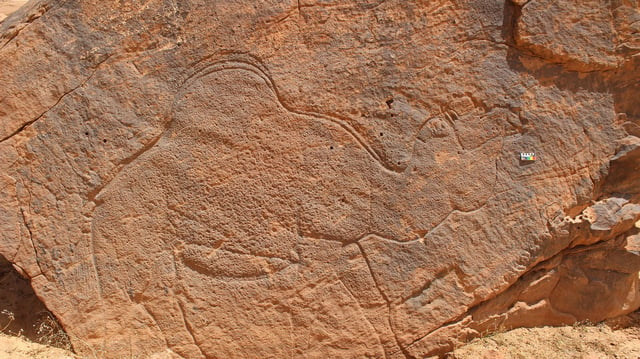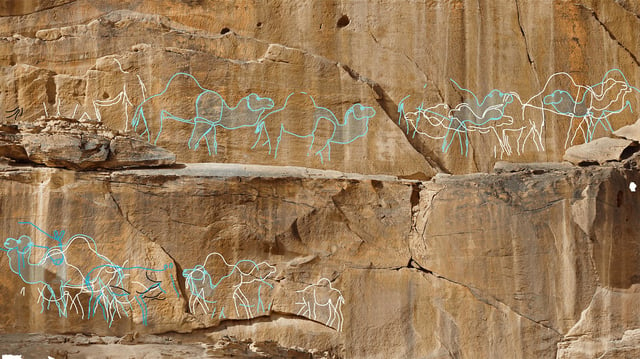Overview
- An international team documented 176 engravings on 62 panels across three sites on the southern rim of the Nefud Desert, publishing the findings in Nature Communications.
- Luminescence dating of sediments and associated tools places the activity between 12,800 and 11,400 years ago, pushing back secure evidence of local occupation by roughly 2,000 years.
- The assemblage features more than 130 life‑sized animal images dominated by camels, with some panels carved up to 39 meters high on narrow ledges that required risky, skilled work.
- Excavations recovered 532 artefacts including engraving tools, beads and Levantine‑style points, indicating repeated use of the sites and cultural links extending hundreds of kilometers.
- Researchers interpret the engravings as markers of transient water sources and movement corridors linked to the wet season, with ongoing fieldwork aimed at refining these conclusions.



